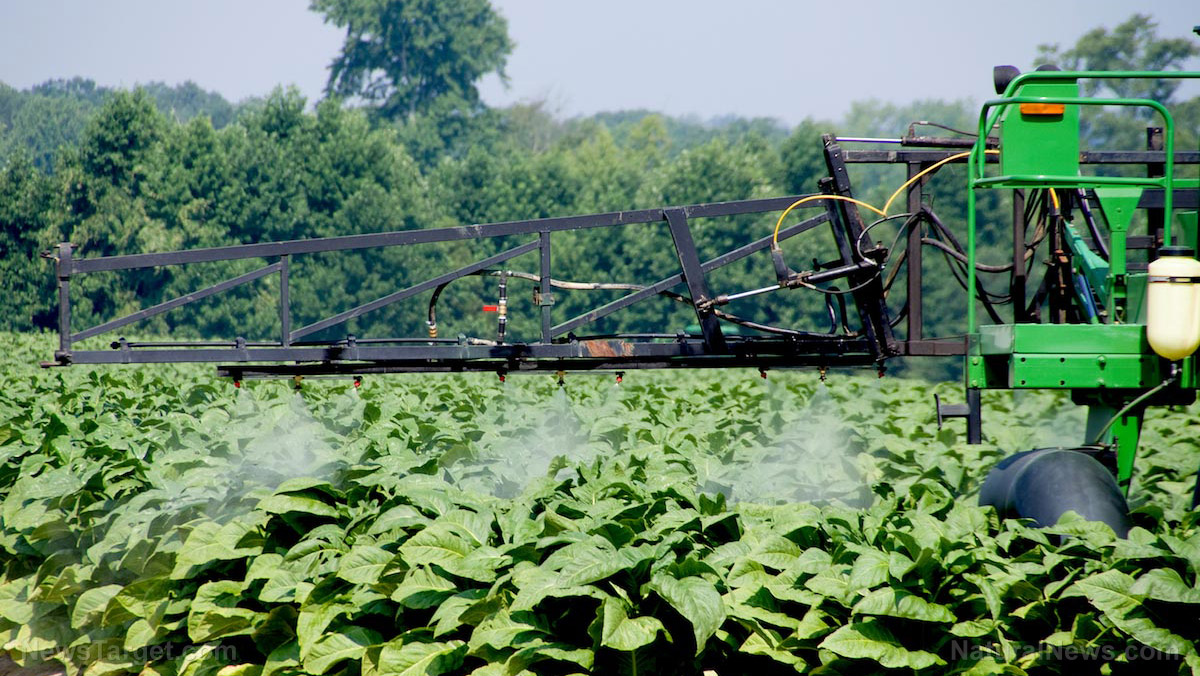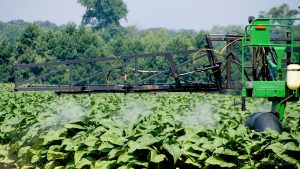Maneb — toxicity, side effects, diseases and environmental impacts
11/29/2017 / By Michelle Simmons

Maneb is a chemical that belongs to the ethylene bisdithiocarbamates (EBDCs) group, which are used to prevent crop damage in the field and to protect harvested crops from damage in storage or transport. It can be physically described as a clear, colorless, or faintly yellow powder.
According to an entry by BeyondPesticides.org, maneb is used to control downy mildews, late blights, leaf spots, root rots, twig and blossom blights, seedling diseases, fruit molds or rots, root rots, and leaf or stem blights in agricultural crops, such as almond, apple, banana, bean, broccoli, Brussels sprout, cabbage, cauliflower, collard, corn, cranberry, cucumber, eggplant, endive, fig, garlic, grape, kale, kohlrabi, lettuce, cantaloupe, casaba, crenshaw, honeydew, watermelon, mustard greens, onion, papaya, pepper, potato, pumpkin, squash, sugar beet, tomato, and turnip grown for greens, barley, corn, cotton, flax seed, oat, potato, rice, rye, safflower, sorghum, and wheat. In addition, maneb is used in greenhouses, nurseries, and sod farms. A chemical name for maneb is manganese ethylene bisdithiocarbamate and has the molecular formula of C4H6MnN2S4.
List of known side effects
There are several known side effects of maneb. One of these is it may cause irritation or inflammation in the skin, eyes, and respiratory tract. Short-term inhalation of large quantities of maneb dust or spray may cause irritation of the mucous membranes, resulting in a scratchy throat, sneezing, cough, and inflammation of the linings of the nose and upper respiratory tract. Maneb can be poisonous in large quantities and the symptoms of poisoning may include nausea, vomiting, diarrhea, loss of appetite, weight loss, headache, confusion, drowsiness, coma, slowed reflexes, respiratory paralysis and death. Moreover, exposure to maneb can cause headache, fatigue, nervousness, dizziness, seizures, and even unconsciousness. In addition, multiple or prolonged exposure to maneb may interrupt the function of thyroid. Maneb is also extremely toxic to the aquatic environment.
Body systems affected by maneb
The body systems affected by maneb include the integumentary, ocular, respiratory, nervous, and endocrine systems.
Items that can contain maneb
Maneb can be found in fungicide products that are used to control a wide variety of diseases, such as blight, leaf spot, rust, downy mildews, and scab in fruits, vegetables, field crops like potatoes, and ornamental plants. Some of the brands that use maneb are Dithane M-22, Manesan, Manex, Manzate, Nereb, Newspor.
How to avoid maneb
Since maneb can be absorbed by the body through inhalation, eye contact, ingestion, and skin contact, it is important to use appropriate protection to avoid maneb exposure. One of the ways to do this is to wear protective clothing, such as gloves, suits, footwear, and headgear. To avoid eye contact with the chemical, it is advised to wear impact resistant eye protection with side shields or goggles. To avoid inhaling the chemical, use a respirator correctly, as improper use of respirators can be dangerous. Since maneb can be swallowed, refrain from eating, drinking, or smoking where it is handled, processed, or stored.
Where to learn more
- Glyphosate exposure causes sunlight to result in aggressive, deadly skin cancers, new science reveals
- STUDY: Exposure to certain pesticides makes you 6 times more likely to develop ALS
- Pesticides Shown to be Huge Parkinson’s Disease Risk
- Toxins.news
- Pesticides.news
Summary
Maneb is a fungicide that is used against blight, leaf spot, rust, downy mildews, and scab in fruits, vegetables, field crops like potatoes, and ornamental plants.
Maneb may irritate the skin, eyes, and respiratory tract.
Exposure to maneb can cause headache, fatigue, nervousness, dizziness, seizures, and even unconsciousness.
Maneb poisoning may lead to nausea, vomiting, diarrhea, loss of appetite, weight loss, headache, confusion, drowsiness, coma, slowed reflexes, respiratory paralysis and death.
Maneb may disrupt thyroid function.
Maneb is extremely toxic to the aquatic environment.
Sources include:
Tagged Under:




















